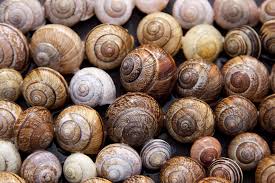Booklet: Molluscs of the Sea (Kenya 1971)
Molluscs of the Sea (Kenya 1971)
13 December (Kenya ) within release Molluscs of the sea goes into circulation Booklet Molluscs of the Sea face value 10 Kenyan shilling
| Booklet Molluscs of the Sea in catalogues | |
|---|---|
| Stanley Gibbons: | Sg: KE SB5 |
Booklet is square format.
Contains SG numbers 37,38,40,42 and 45 in blocks of 4Also in the issue Molluscs of the sea:
- Stamp - Morning Pink (Pharaonella perna) face value 5;
- Stamp - Episcopal Miter (Mitra episcopalis) face value 10;
- Stamp - Strawberry Top Shell (Clanculus puniceus) face value 15;
- Stamp - Humpback Cowry (Mauritia mauritania) face value 20;
- Stamp - Variable Abalone (Sanhaliotis varia) face value 30;
- Stamp - Flame Top Shell (Trochus flammulatus) face value 40;
- Stamp - Violet Globe Snail (Janthina globosa) face value 50;
- Stamp - Red Helmet Shell (Cypraecassis rufa) face value 60;
- Stamp - Chambered Nautilus (Nautilus pompileus) face value 70;
- Stamp - Ramose Murex (Chicoreus ramosus) face value 1;
- Stamp - Atlantic Trumpet Triton (Charonia tritonis) face value 1.50;
- Stamp - Trapezium Horse Conch (Fasciolaria trapezium) face value 2.50;
- Stamp - Wavy Turban (Turbo fluctuosus) face value 5;
- Stamp - Textile Cone (Conus textile) face value 10;
- Stamp - Scorpion Conch (Pterocera scorpio) face value 20;
- Booklet - Molluscs of the Sea face value 5;
- Booklet - Molluscs of the Sea face value 10;
Booklet Molluscs of the Sea it reflects the thematic directions:
Animals are multicellular, eukaryotic organisms of the kingdom Animalia (also called Metazoa). All animals are motile, meaning they can move spontaneously and independently, at some point in their lives. Their body plan eventually becomes fixed as they develop, although some undergo a process of metamorphosis later on in their lives. All animals are heterotrophs: they must ingest other organisms or their products for sustenance.
Mammals are any vertebrates within the class Mammalia (/məˈmeɪli.ə/ from Latin mamma "breast"), a clade of endothermic amniotes distinguished from reptiles (including birds) by the possession of a neocortex (a region of the brain), hair, three middle ear bones and mammary glands. All female mammals nurse their young with milk, secreted from the mammary glands. Mammals include the largest animals on the planet, the great whales. The basic body type is a terrestrial quadruped, but some mammals are adapted for life at sea, in the air, in trees, underground or on two legs. The largest group of mammals, the placentals, have a placenta, which enables the feeding of the fetus during gestation. Mammals range in size from the 30–40 mm (1.2–1.6 in) bumblebee bat to the 30-meter (98 ft) blue whale. With the exception of the five species of monotreme (egg-laying mammals), all modern mammals give birth to live young. Most mammals, including the six most species-rich orders, belong to the placental group. The largest orders are the rodents, bats and Soricomorpha (shrews and allies). The next three biggest orders, depending on the biological classification scheme used, are the Primates (apes and monkeys), the Cetartiodactyla (whales and even-toed ungulates), and the Carnivora (cats, dogs, seals, and allies).
Marine life, or sea life or ocean life, refers to the plants, animals and other organisms that live in the salt water of the sea or ocean, or the brackish water of coastal estuaries. At a fundamental level, marine life helps determine the very nature of our planet. Marine organisms produce much of the oxygen we breathe. Shorelines are in part shaped and protected by marine life, and some marine organisms even help create new land. Altogether there are 230,000 documented marine species, including over 16,000 species of fish, and it has been estimated that nearly two million marine species are yet to be documented. Marine species range in size from the microscopic, including plankton and phytoplankton which can be as small as 0.02 micrometres, to huge cetaceans (whales, dolphins and porpoises) which in the case of the blue whale reach up to 33 metres (109 feet) in length, being the largest known animal.
A seashell or sea shell, also known simply as a shell, is a hard, protective outer layer created by an animal that lives in the sea. The shell is part of the body of the animal. Empty seashells are often found washed up on beaches by beachcombers. The shells are empty because the animal has died and the soft parts have been eaten by another animal or have rotted out. The term seashell usually refers to the exoskeleton of an invertebrate (an animal without a backbone). Most shells that are found on beaches are the shells of marine mollusks, partly because many of these shells endure better than other seashells.




